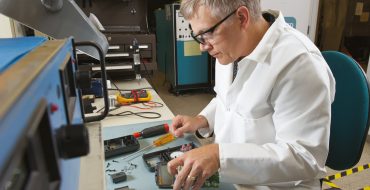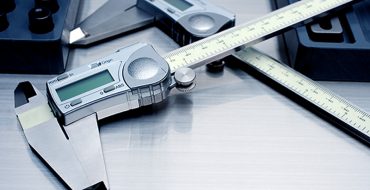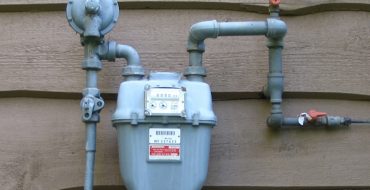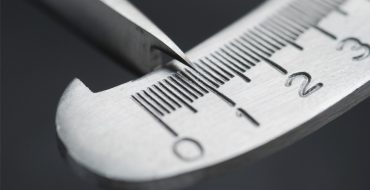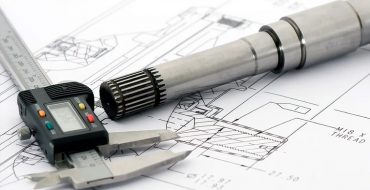Chances are the pieces of test equipment you use on a daily basis probably cost a lot of money when you bought them. Since this is the case, we can’t stress enough how important it is you take care of your tester by following this simple guide.
Remove Your Tester’s Batteries!
One of the most simple things that can cause damage to a tester is often neglected – removing batteries when storing it. Although we do generally tend to trust batteries placed inside things if they are left for long period of time, there is a significant change that that the battery could be damaged, which ultimately leads to some pretty nasty times for your tester.
Battery acid is an extremely corrosive material, and when it leaks, the acid can come directly into contact with plastics and internal components inside the tester. Battery degradation is much more likely to happen if a tester is left idle for a long period of time, and if the acid is leaking out of the batteries, there’s a chance that the battery cradle can be warped leaving it useless or – in the worse case scenario – the acid can leak onto the PCB or components and render them completely unusable.
This would then result in costly repairs having to be made to your device, so make sure you don’t get caught out and remove your tester’s batteries when it isn’t being used! It may seem like a hassle but we really can’t stress this enough – we’ve seen countless instances where not removing the batteries in a tester has caused massive damage.
Perform Regular Battery Checks
This again applies if your tester will be left for a long period of time, sitting idle and not doing a whole lot. If your tester is going to be left for a long time, there’s a chance that the battery could degrade, ultimately leading to it not being able to generate a charge powerful enough to power a tester.
An example of this is found in the BATTPAT PAT tester – if these devices are left unused for a lengthy period of time the internal battery drops so low that it no longer has the charge to activate the charging circuit when a charger is plugged in. As a result, the meter won’t charge at all, rendering it entirely useless until a repair is made.
Lead Checks and Safety
Test device care is extremely important, but this care also extends to the various types of lead you might use with your equipment as well.
There are so many factors that might cause damage to your leads. If you don’t like regularly replacing your leads with expensive lead sets, we recommend you avoid them like they’ve got the plague.
When storing your leads, they should be loosely coiled, wrapped or folded to avoid kinks and knots becoming present in the leads. When testing it is essential you remove these knots and kinks as they can ultimately affect the readings that the tester generates. Excessive stretching or incorrect storage of cables can also affect the internal wiring inside, and when wiring is damaged it becomes both likely to not generate correct readings and also becomes a danger.
It may seem obvious as well but you really should take care not to stand on leads. It happens a lot more commonly than you might think and excessive weight on leads can also result in them becoming damaged.
Also make sure you don’t just tape up leads – this is extremely dangerous and you should always put health and safety first and purchase a suitable replacement.
General Use
This is perhaps the most obvious section in this guide, but you’d be amazed how often we see testers subjected to negligence that ends up with them being damaged.
First of all you should never, ever, lift your tester up by the mains lead, particularly if the lead is hard-wired into your tester. Leads that aren’t hardwired in could come loose and your tester could fall onto hard ground, while holding a hard-wired cable to lift up your potentially heavy testing device could ultimately result in the cable coming loose, rendering it ineffective.
Here’s another obvious one – try to avoid knocking or dropping your tester. Some testers do have extra protection to stop them from being damaged when dropped from a height, but a lot of them also don’t! So make sure you aren’t careless with your tester; just remember how much you probably paid for it.
Finally, if a fuse is blown inside your tester’s plug, make sure you replace it with the right one. You should be able to easily determine the correct fuse rating and you should always remember that not replacing it with the correct one can be extremely dangerous.
Cleanliness
We hate to sound like your mother nagging you to tidy stuff, but the build up of dirt, general wear and tear and other forms of nasty grime in your tester can cause incorrect readings, affect internal components and can even cause internal shorts.
We recommend first of all that you regularly check that there are no loose bits of wire lying around – if so, they can work your way into your tester and short across multiple components, which can end up in a costly repair.
The build of general grime in your tester can also cause it to start generating incorrect readings, so make sure you take steps regularly to give your tester a thorough clean. We actually do this as part of our calibration and repair service, as we know exactly how damaging it can be.
Tester Storage
When you’re storing your meter we recommend its kept somewhere safe and dry where it will not be exposed to severe or prolonged temperature changes.
For example, leaving your tester in the back of your van overnight in the winter might have an affect on the internal components, as as the temperature drops outside and warms towards the morning, the internal components of your testing device can be affected by the sudden changes in temperature.
Of course leaving your tester in a van isn’t a good idea either as it could be stolen, so just to be safe we recommend you keep it in a carry case inside your house when it isn’t in use!



